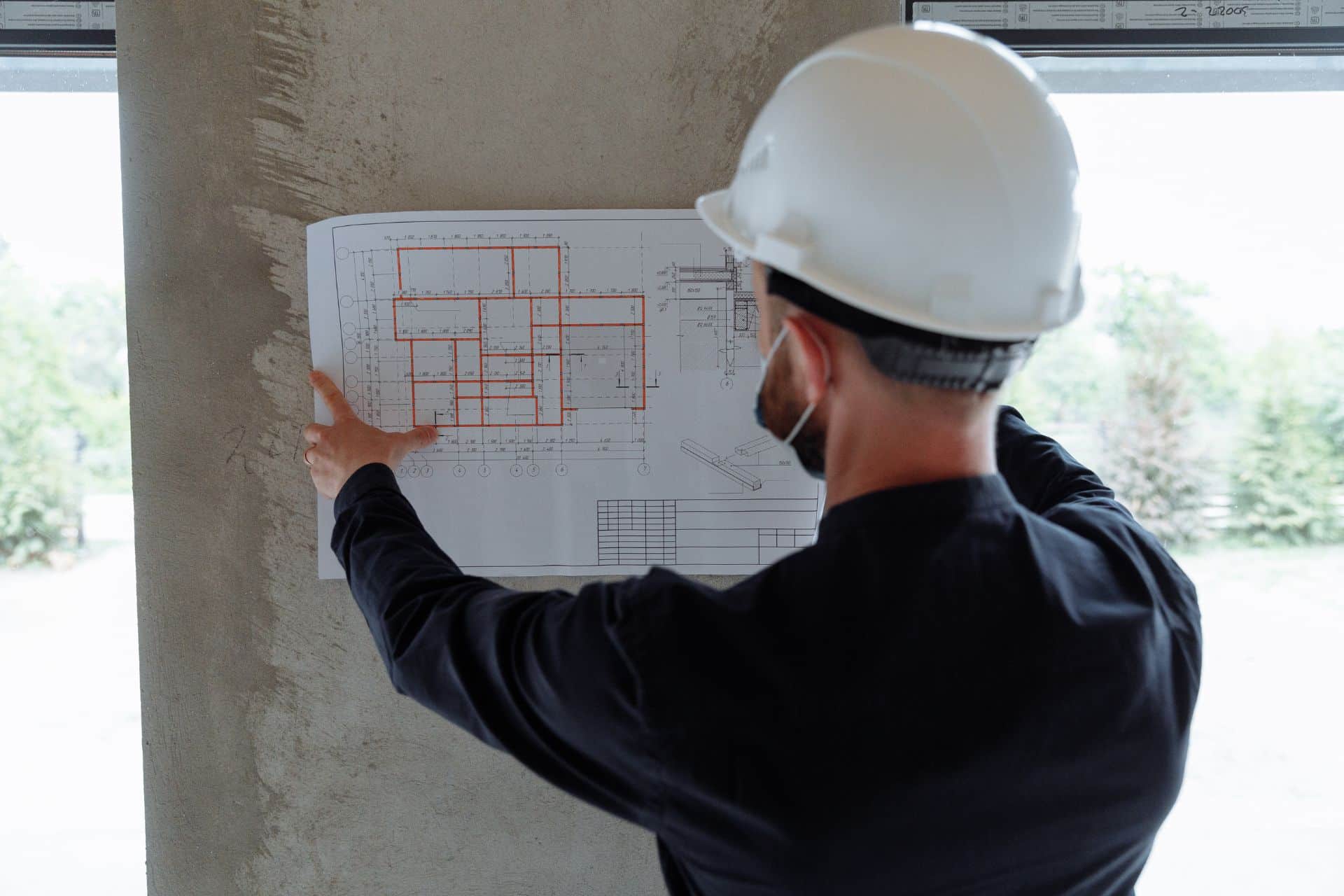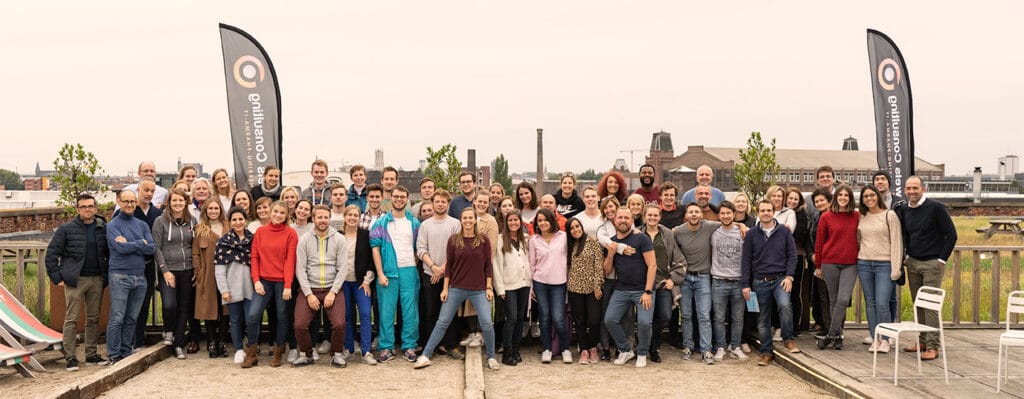Insights
Lean IPD contract
What is special about a Lean IPD?
In a Lean IPD contract, the builders, designers and the client sign the same contract. In this, everyone communicates openly about their estimated costs and profit demand. They put that profit “at risk,” allowing them to increase their profit, but also lose it. That motivates everyone to work together more efficiently and economically.
How do you create a Lean IPD contract?
To implement Lean IPD, your construction or infrastructure project and working methods must meet a number of conditions. Here’s how to draw up a conclusive Lean IPD contract, and what you need to do so.

The basics of Lean IPD
Lean IPD aims to make construction and infrastructure projects more efficient. The methodology can be boiled down to 3 basic pillars: an aligned contract, lean construction and a project culture that focuses on collaboration.
If each party follows this philosophy, everyone can reap the benefits. Otherwise, every party involved experiences disadvantage. With Lean IPD, you win together, or you lose together.
The ground rules of Lean IPD are established in a Lean IPD multiparty contract between all parties involved.
Lean IPD multiparty contract
A Lean IPD multiparty contract, as the name suggests, is a contract with multiple parties. In traditional construction projects, the client signs a contract with the designers, and another contract with the builders. Those parties then often subcontract with other companies, which again have separate contracts.
With Lean IPD, the client, the designers and the builders all sign the same contract: an ‘integrated form of agreement’. Other parties involved join the project as subcontractors or co-sign the original contract.
When the builders or designers hire other parties, they get to choose whether they sign a traditional contract, or have the subcontractors join the Lean IPD contract.
Risk and reward
In a unified Lean IPD contract, a maximum price is set for the entire project. That maximum price consists of all costs and overhead, the profit all the partners want to make, and a contingency for unforeseen costs.
In Lean IPD contracts, the construction team puts their profit ‘at risk’. If everything goes according to plan, then the construction partners can increase their profit. If the project misses the deadline or costs more, the construction partners break even. Unforeseen (overhead) costs are always guaranteed to be paid by the owner, even if they were not planned in advance.
Risk/reward plan
Those risks and rewards are moulded into a risk/reward plan. This is a crucial part of a Lean IPD contract.
Profit at risk
As mentioned above, construction partners put their intended profit at risk at the start of the project. All partners report their profit amount, and those amounts are added up to 1 large lump sum amount. The entire team agrees to put (part of) that amount ‘at risk’.
Ideally, each party should put their target profit 100% at risk. Why? Because then they can also get the biggest bonus. If they put only 75% at risk, the parties also get only a maximum of 75% of the bonus to which they would otherwise be entitled.
What if things go well?
If all goes well, then all parties receive their requested profit in full at the end of a project.
If things go even better and a project is delivered too early and/or (way) under budget? Is the contingency not fully utilized? Were smart cost savings made during the project? Then the amount saved is distributed as additional profit to all contractors and the owner.
A nice bonus, and a very good incentive to work together even better and more efficiently.
What if things go wrong?
When unexpected costs come up, the owner initially uses the contingency to pay for those extra costs. Has that amount been used up as well? Then he draws on the combined profit lump sum – made up from the ‘profit at risk’ of all parties – to pay the costs.
It does not matter which party spends more than expected: all parties lose part of their profit if the owner has to use the lump sum to pay for unexpected costs.
This encourages all parties to work well together to avoid problems. This is completely different from traditional projects, where blame is often placed on each other to avoid penalties.

Contingency
So how do you determine the contingency amount?
Current uncertainties
At the beginning of a project, your view of the total cost is not yet clear. At that point, you will set the contingency higher than when you are further advanced in the design phase of the project.
You also need to look at the budgets and cost proposals of all parties. Is one partner setting their costs too high so they can ‘save’ later and get more profit? Then you can set the contingency lower to keep the cost from spiralling out of control.
Future uncertainties
Do you know in advance that certain things will need to be figured out on the spot? Or do you anticipate a problem with your building application? Then you can set your contingency higher to absorb those costs.
However, try to avoid this. Find out in advance what the problem is and foresee a solution. Otherwise, you will probably provide too much or too little money. In that case, you as the client will have to pay more anyway.
Can you really not solve the problem or uncertainties at the beginning of the project? Then provide a larger amount for the contingency, but be specific in the contract. What do you (not) expect from the solution, and what do you (not) want to pay for? This way, you already prepare the change order (modification of the contract), and you will have fewer big surprises and/or time-consuming discussions later.
Reward
What if the parties are entitled to additional profit? In a Lean IPD contract, you specify how any extra profit will be divided between the owner and the construction parties.
For example, you can take into account the contingency amount. The smaller the contingency, the more risk the project team has of losing their profit. In that case, they earn a larger share of the extra profit. Is the contingency relatively large? Then the owner can claim a larger piece of the extra profit for themselves.
You can also choose to work with tranches. The first 2% savings go to the owner, the next 3% extra profit is shared among everyone else, and so on….
Finally, you can also opt that profits from savings are shared among all parties up to a certain limit. Often owners choose to pay everyone until they have made 50% or 100% more profit than they first intended. After that, the remaining amount goes to the owner anyway.
Change orders
Of course, things can still change when the contract is already signed. That is why we have change orders. These are changes to a project that will lead to changed results, delivery terms or costs. Change orders are only later included in the contract.
There are 3 changes that can lead to a change order:
- Problems with the government: An institution is being difficult regarding a permit, legislation is changing….
- Unexpected obstacles: Sometimes the team does enough preliminary research and still run into unexpected problems. This leads to a change order only if they really could not discover or research the problem beforehand. Otherwise, the responsibility is borne by all parties in the project, and the owner can pay for those unexpected costs with the contingency or the profit lump sum amount.
- Assignment changes: The owner can change the assignment when the project is already underway.
Errors, coordination problems, wrong resources and methods, equipment replacement… do not trigger a change order. These problems are all solved in Lean IPD with money from the contingency and profit at risk.

Conclusion
A Lean IPD contract is very different from traditional construction and infrastructure contracts. The owner, designers and builders sign the same contract, communicating openly about their (expected) net costs and desired profits. That information is put into a risk/reward plan.
In a limited number of cases, that contract can be modified with change orders, but usually the costs for unforeseen challenges in the project are paid for with the contingency and profit at risk lump sum amount.
Is the contingency amount not (fully) used? Then the project team and the project owner are paid additional profit. This encourages everyone to make the project as economical as possible, thus increasing the profit for everyone.
Are the contingency and the profit at risk used up, and will additional costs be required to complete the project? Then the owner will continue paying the costs of the construction team, so the project partners will always break even.
Want to know more?
In our next article, we will elaborate on the benefits of Lean IPD in construction projects. Then we will discuss possible problems and their solutions, and give tips on how to apply Lean IPD successfully.
Do you want to know more about Lean IPD or utilize Lean IPD in your next construction or infrastructure project? Contact us. Our Lean IPD project team is happy to think along with you.
Contact Pauwels - Lean IPD EN
"(Required)" indicates required fields
Contact us
Do you have any questions for us? Let’s get in touch!
"(Required)" indicates required fields





